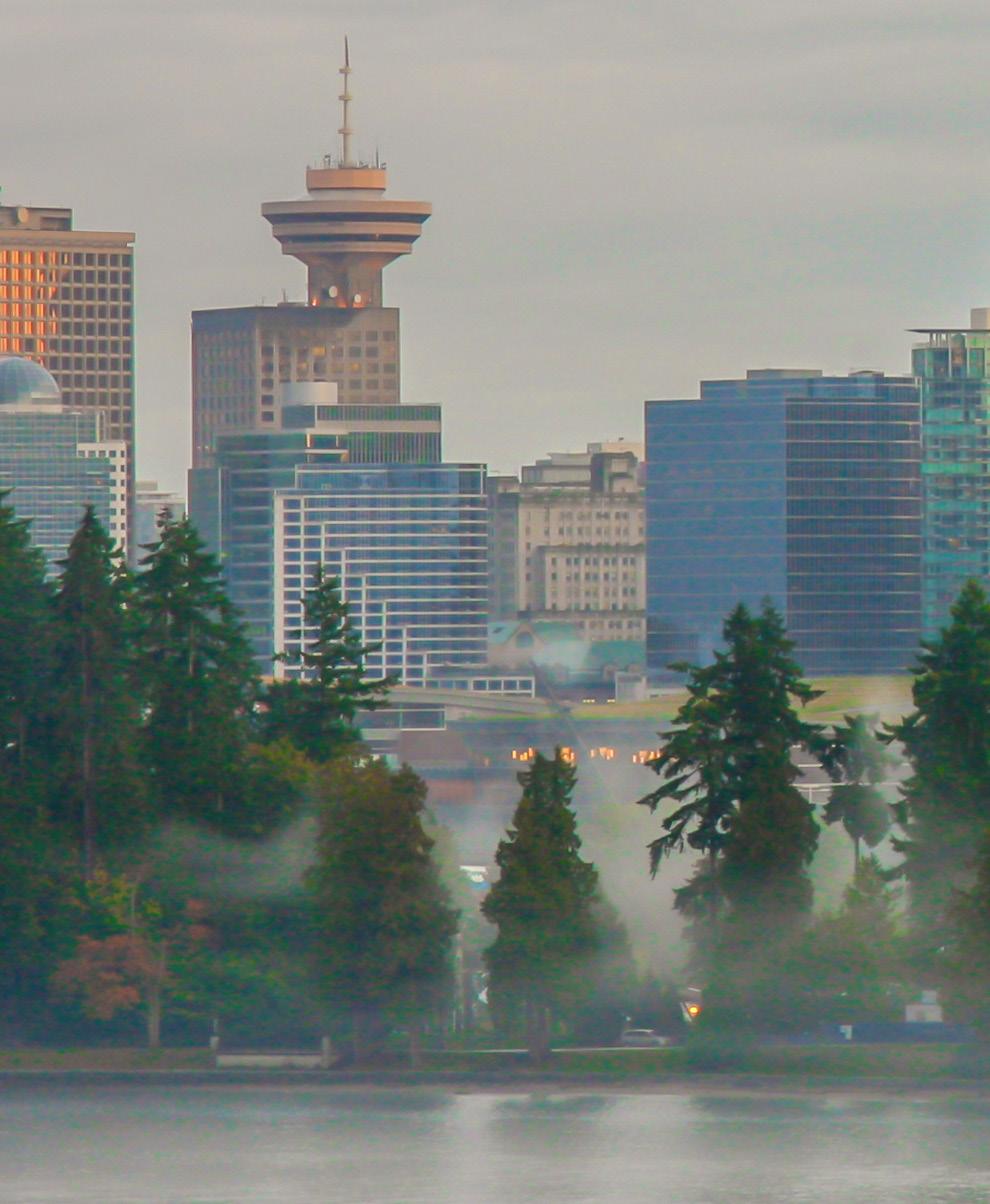
2 minute read
Finding a path to urban forestry
Tara Bergeson has been at the forefront of urban forestry’s growth in BC
After cutting her teeth on research and tree planting, UBC Forestry alumnus, Tara Bergeson (BSF’09) entered the then emerging field of urban forestry. Now the Urban Forestry Supervisor with the City of Kelowna, Tara has played a key role in community greening and wildfire preparedness projects, including Kelowna’s most recent wildfire resiliency plan. With many years in the field under her belt, we were grateful that Tara sat down with us to share insights from her career, both past and present.
Advertisement
How did you first become interested in forestry?
I grew up in Riding Mountain National Park in southern Manitoba, where my grandfather was a park warden. He would often take me patrolling with him on horseback, so I appreciated protecting the land from an early age. When I was 18, I fell in love with tree planting. That’s also when I found out that forestry was a career option. Through my UBC Bachelor of Science in Forestry (Forest Resources Management) program, I secured a work placement with Bruce Blackwell (BSF’84, MSc ’89) in wildfire and stand rehabilitation in mountain pine beetle-affected areas near Williams Lake. Following that, I completed a Master of Science in Natural Resource and Environmental Studies at the University of Northern BC, which took me to northern Uganda, where I studied the relationship between the environment and health.
What drew you to urban forestry, in particular?
During my undergrad, I was hired to inventory all vegetation in Stanley Park – from trees to shrubs, ferns and coarse woody debris – after the 2006 windstorm that leveled 41 hectares of the forest. We crawled all over the place to plot each hectare of Stanley Park. I absolutely loved the work and being part of a team that was protecting and restoring a central pillar of Vancouver’s natural environment. Our data informed part of the first urban forest management plan for Stanley Park, which coincided with a time when urban forestry was entering the scene as a viable career option. Through each step of my professional journey, I continued finding connections between people and places, ultimately landing my dream job as Urban Forestry Supervisor with the City of Kelowna. My work there ties together community and environmental needs, such as wildfire protection, parks management and development and planning.
What’s an example of a forest management initiative you’ve worked on?
Over the past five years, I’ve been helping to grow our NeighbourWoods program, which makes available subsidized trees for residents to purchase to increase canopy cover on private properties. Since it began, the program has resulted in the planting of over 6,000 trees, and is a significant contributor to our urban forest.
What aspects of your role with the City of Kelowna are you particularly passionate about?

Wildfire is something that I’ve always been very passionate about. I was tree planting in Barriere during the devastating 2003 Okanagan Mountain Park Wildfire, and was one of the over 33,000 people evacuated from the area. This fire prompted Kelowna to create its first community wildfire protection plan in 2004 – the first of its kind in the province. In my role, I’ve been proud to have overseen several initiatives to reduce fire risk in Kelowna. The neighbourhood chipping program I initiated in 2022 removed almost 100 metric tonnes of hazardous landscaping material that could pose a fire risk from over 250 community homes. We also created a FireSmart Kelowna website that provides information on how to reduce fire risk to homes by following steps such as cleaning gutters, installing fire-resistant windows, planting fire-resistant plants, keeping grass trimmed and keeping roofs clear of combustible branches and other debris. In general, though, I love the diversity of urban forestry. My role touches on everything from policy to operations, forest management, media relations and community outreach.
Attend the Urban Forestry Webinar on June 15th, 2023 in which Tara will appear as a guest panelist and take questions from the audience: forestry.ubc.ca/events/urban-forestry-webinar

Prof.ScottHinch
Compounding the impacts of climate change are land use practices such as forestry, agriculture, urbanization and water extraction that degrade habitat and can also create numerous barriers for fish to access habitat,” Scott adds.
“It’s almost like death by a thousand cuts.”










